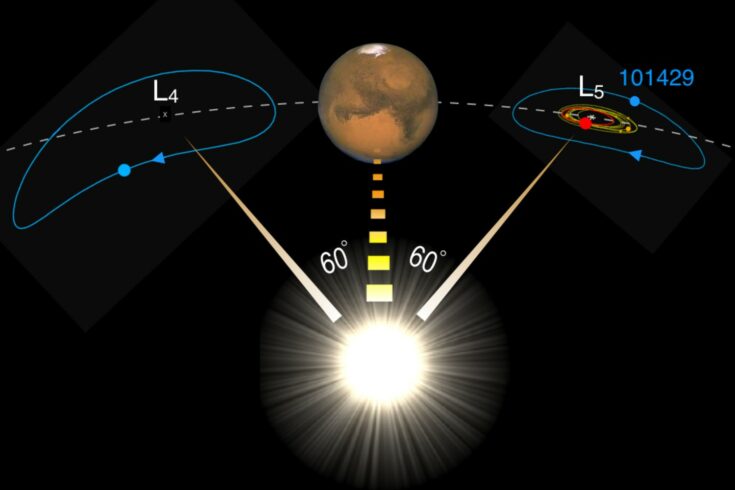Scientists think they have found the Moon’s long-lost sibling hiding behind Mars.
The international research team, led by scientists at the Armagh Observatory and Planetarium (AOP) and supported by the UK Science and Technology Facilities Council (STFC), believe the asteroid known as (101429) 1998 VF31 dates back to the early years of the solar system and the giant impacts that formed our Moon and substantially re-shaped the Earth.
Researchers involved in the discovery have been studying Mars’ Trojans, including the lunar-like asteroid, to understand if there are Trojan asteroids orbiting the Earth.
Trojan asteroids
Trojans are a large group of asteroids that share an orbit with a planet or moon and are of great interest to scientists. This is because they represent leftover material from the formation of the planets and can tell scientists a great deal about how the planets came into being.
To their surprise, the team found that 101429’s best spectral match was not with other small bodies but with our nearest neighbour, the Moon.
The team utilised the European Southern Observatory’s (ESO) Very Large Telescope (VLT) and used its light-collecting power to gather the highest ever quality data on the asteroids.
The mini Moon’s origin
Though the unusual object’s origin is still a mystery, the researchers have a few theories. One of those is why the asteroid looks like the Moon – because it came from the Moon.
Lead author Dr Apostolos Christou, from AOP, explains:
The early solar system was very different from the place we see today. The space between the newly-formed planets was full of debris and collisions were commonplace.
Large asteroids – we call these planetesimals – were hitting the Moon and the other planets. A shard from such a collision could have reached the orbit of Mars when the planet was still forming and was trapped in its Trojan clouds.
However, the more likely scenario is that the object came from Mars itself. Just like the Moon and Earth, Mars was pummelled by impacts early in its history and a colossal impact could have sent the lunar-like asteroid into Mars’ orbit.
The ongoing research supported by STFC, the Northern Ireland Department for Communities and ESO will continue to study the Trojans of Mars to learn about the early history of the terrestrial planets, but also to inform searches for Trojans of the Earth.
Further information
Find out more on Armagh Observatory and Planetarium’s website.
The research paper is now available on arxiv.org.

